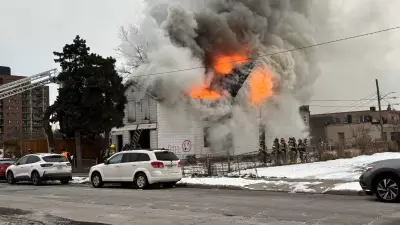
Canadian homeowners and renters need to pay close attention to new life-saving regulations sweeping across the country. Provincial governments are significantly expanding requirements for carbon monoxide alarms in residential properties, creating what safety experts are calling the most comprehensive CO protection standards in Canadian history.
The changes come as emergency responders continue to deal with preventable carbon monoxide incidents that hospitalize and claim lives each year. Often called the 'silent killer,' carbon monoxide is odorless, colorless, and undetectable without proper equipment.
Where You'll Need Carbon Monoxide Alarms Now
The updated regulations specify precise placement requirements that go beyond previous standards:
- Outside all sleeping areas - ensuring alarms wake occupants during night hours
- On every level of the home - including basements and attics with fuel-burning appliances
- Near all fuel-burning appliances - such as furnaces, water heaters, and fireplaces
This represents a significant expansion from previous requirements that often focused only on areas near bedrooms.
Understanding the Timeline for Compliance
While specific implementation dates vary by province, most jurisdictions are following similar phase-in periods:
- New construction - Immediate compliance required
- Existing homes upon sale - Must meet new standards before transfer of ownership
- All rental properties - Landlords have specific deadlines for installation
Homeowners should check with their local municipal office for exact compliance dates in their area.
Why These Changes Matter Now
Carbon monoxide poisoning incidents spike during winter months when homes are sealed tight and heating systems work overtime. The Canadian Association of Fire Chiefs reports that proper CO alarm installation could prevent the majority of carbon monoxide-related deaths annually.
Modern building materials and energy-efficient construction have created homes that are more airtight than ever before. While this improves energy efficiency, it also increases the risk of CO buildup if appliances malfunction or ventilation becomes blocked.
Choosing the Right Carbon Monoxide Alarm
Not all CO detectors are created equal. Safety experts recommend:
- Units with digital displays that show CO levels in parts per million
- Alarms with battery backup for power outages
- Devices that meet Canadian Standards Association (CSA) requirements
- Interconnected systems that trigger all alarms when one detects CO
Many homeowners are opting for combination smoke and carbon monoxide detectors to meet multiple safety requirements with single units.
The expanded regulations represent a significant step forward in home safety across Canada. With proper installation and maintenance of carbon monoxide alarms, families can protect themselves against one of the most insidious household dangers.





